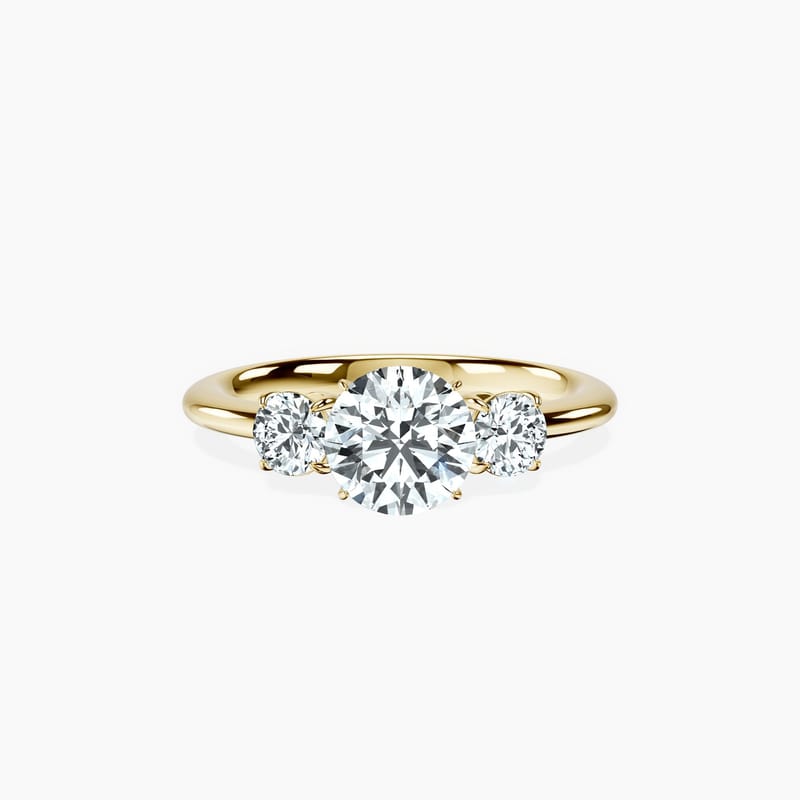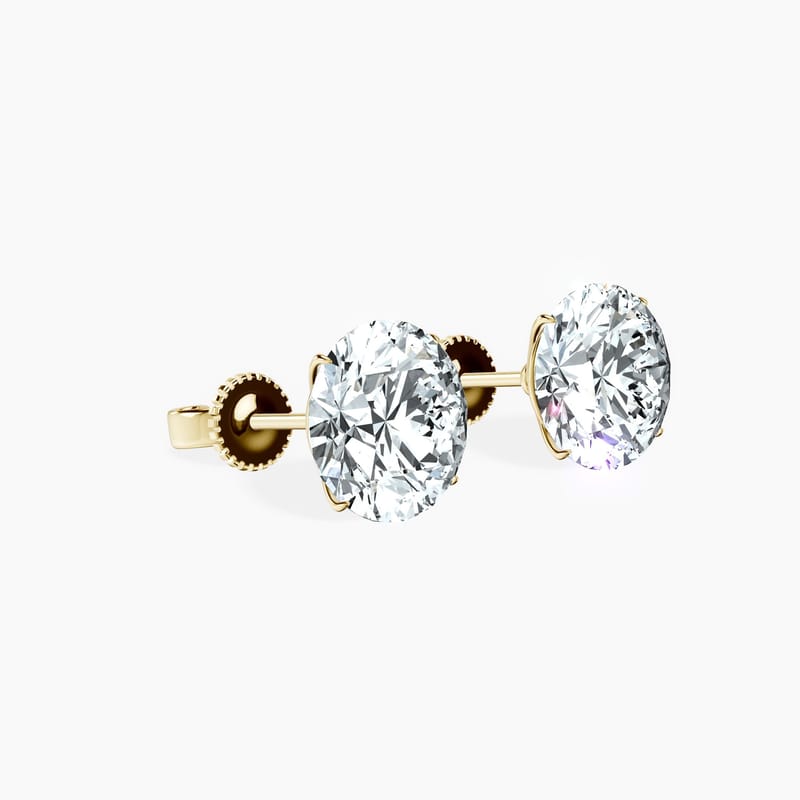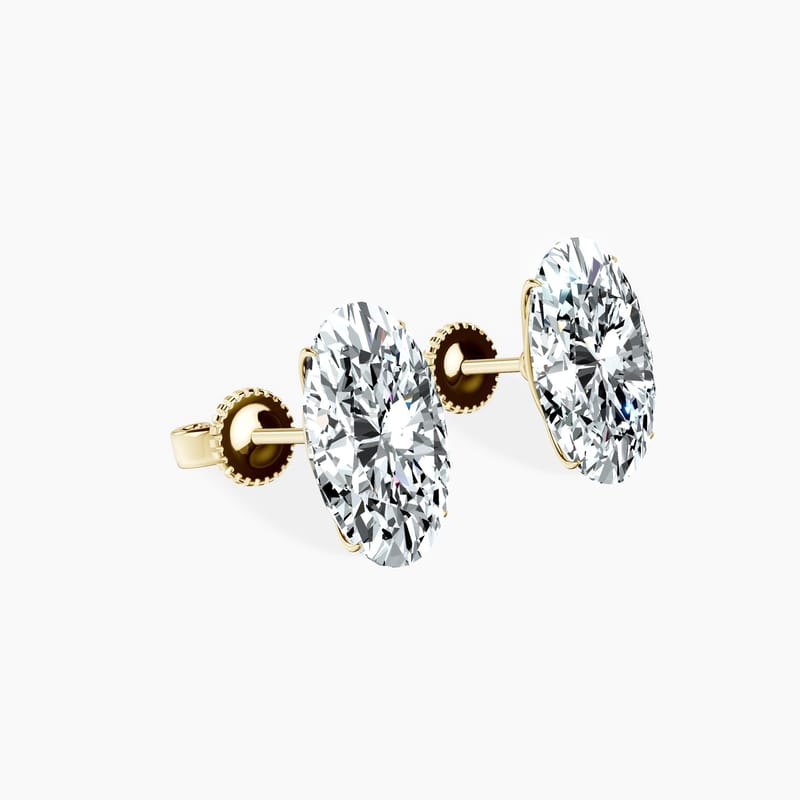Natural Diamonds vs. Lab Grown Diamonds: What’s the Difference?
When it comes to choosing a diamond, one of the first decisions you'll face is whether to go for a Natural Diamond or a Lab Grown one. Both have their unique qualities, and understanding the differences can help you choose the one that best suits your needs.
What Are Natural Diamonds?
Natural diamonds are formed deep within the Earth under extreme pressure and heat over billions of years. They are mined from the Earth, cut, and polished to be used in jewelry. Natural diamonds are often valued for their rarity and the time it takes for them to form.
Pros of Natural Diamonds:
- Rarity and History: Each Natural Diamond is unique, formed over billions of years, which adds a sense of history and rarity to the stone.
- Resale Value: Natural diamonds tend to hold their value well and can even appreciate over time, making them a solid investment.
- Emotional Significance: The idea of a Diamond being created by nature over such a long period can add emotional and symbolic significance.
Cons of Natural Diamonds:
- Cost: Natural diamonds are generally more expensive due to their rarity and the cost of mining.
- Environmental and Ethical Concerns: The mining process can have significant environmental impacts, and there are concerns about unethical labor practices in some regions.
What Are Lab Grown Diamonds?
Lab grown diamonds, also known as man-made diamonds or synthetic diamonds, are created in a laboratory environment that replicates the natural conditions under which diamonds form. These diamonds are chemically, physically, and optically identical to natural diamonds but are produced in a fraction of the time.
Pros of Lab Grown Diamonds:
- Affordability: Lab grown diamonds are typically more affordable than natural diamonds, making them accessible without compromising on quality.
- Ethical and Eco-Friendly: Since they are created in a controlled environment, Lab Grown Diamonds don’t involve mining, making them a more sustainable and ethical choice.
- Customizability: The lab process allows for more control over the diamond’s characteristics, often resulting in fewer inclusions and better overall quality.
Cons of Lab Grown Diamonds:
- Perceived Value: Despite being identical to Natural Diamonds, some people place a higher value on Natural Diamonds due to their rarity.
- Resale Value: Lab Grown Diamonds may not hold or appreciate in value the same way Natural Diamonds do, which could be a consideration for investment purposes.
The Diamond Creation Process: Natural vs. Lab Grown
Understanding how diamonds are created can give you deeper insight into the differences between Natural and Lab Grown Diamonds.
The Formation of Natural Diamonds
Natural Diamonds are formed about 100 miles beneath the Earth's surface in the mantle, where temperatures reach around 2,000 degrees Fahrenheit. Under these extreme conditions, carbon atoms bond together to form diamond crystals. These crystals are then carried to the Earth's surface through volcanic eruptions, where they are eventually mined.
Key Points:
- Timeframe: Natural Diamond formation takes billions of years.
- Rarity: Only a small percentage of diamonds mined are of gem quality, adding to their rarity and value.
- Unique Characteristics: Each Natural Diamond has unique inclusions, which can be seen as a fingerprint of its formation process.
The Creation of Lab Grown Diamonds
Lab Grown Diamonds are created using two primary methods: High Pressure High Temperature (HPHT) and Chemical Vapor Deposition (CVD).
- HPHT Method: This method mimics the natural formation process by using high pressure and high temperature to create diamonds from a carbon source. It’s the closest replication of how Natural Diamonds form.
- CVD Method: In this method, a diamond seed is placed in a chamber filled with carbon-rich gas. The gas is then heated, causing carbon atoms to bond to the seed and form a diamond layer by layer.
Key Points:
- Timeframe: Lab Grown Diamonds can be created in a matter of weeks.
- Quality Control: The controlled environment allows for consistent quality, often resulting in fewer inclusions.
- Environmental Impact: Lab Grown Diamonds have a significantly lower environmental impact compared to mining.
Evaluating Diamond Quality: The 4 Cs
Whether you choose a natural or lab grown diamond, evaluating the quality of the diamond is essential. The 4 Cs—Cut, Color, Clarity, and Carat Weight—are the standard criteria used to assess diamond quality.
- Cut
The cut of a diamond refers to how well it has been shaped and faceted. It is perhaps the most crucial of the 4 Cs because it directly affects the diamond's brilliance and sparkle.
- Excellent Cut: Reflects almost all the light that enters the diamond, resulting in maximum brilliance.
- Very Good Cut: Reflects most of the light, with a slight reduction in brilliance.
- Good Cut: Reflects a good amount of light, but not as much as higher-grade cuts.
- Fair and Poor Cuts: Reflect significantly less light, resulting in a less brilliant diamond.
Tip: When choosing a diamond, prioritize the cut over other Cs, as a well-cut diamond will look more brilliant even if it has lower grades in other areas.
- Color
Diamond color grading ranges from D (colorless) to Z (light yellow or brown). The less color a diamond has, the higher its value.
- D-F (Colorless): These diamonds are the most valuable and rare, with no detectable color.
- G-J (Near Colorless): Slight color is noticeable when compared to higher grades, but these diamonds still appear colorless to the untrained eye.
- K-M (Faint Color): Noticeable color can be seen, especially in larger diamonds, but they are still a good option for those on a budget.
- N-Z (Very Light to Light Color): These diamonds have an easily noticeable color, which can affect their brilliance and value.
Tip: Consider the metal of the setting when choosing a diamond color. A near-colorless diamond can appear more colorless when set in white gold or platinum.
- Clarity
Clarity refers to the presence of inclusions or blemishes in a diamond. The fewer the inclusions, the higher the clarity grade.
- Flawless (FL) and Internally Flawless (IF): No inclusions or blemishes are visible under 10x magnification. These diamonds are extremely rare.
- Very Very Slightly Included (VVS1 and VVS2): Inclusions are difficult to see even under 10x magnification. These diamonds are of high quality.
- Very Slightly Included (VS1 and VS2): Inclusions are visible under 10x magnification but are considered minor.
- Slightly Included (SI1 and SI2): Inclusions are noticeable under 10x magnification and may be visible to the naked eye, especially in larger diamonds.
- Included (I1, I2, I3): Inclusions are obvious and may affect the diamond’s brilliance and durability.
Tip: For most buyers, VS1 or VS2 clarity offers a great balance of quality and value, as inclusions are not visible to the naked eye.
- Carat Weight
Carat weight measures the size of the diamond. While carat weight is often associated with size, two diamonds of the same carat weight can look different in size depending on their cut.
- 1 Carat: The standard size for an engagement ring, offering a balance between size and affordability.
- Above 1 Carat: Larger diamonds are rarer and thus more expensive. A 2-carat diamond is significantly more costly than two 1-carat diamonds.
- Below 1 Carat: Smaller diamonds can still be stunning, especially if they have a high cut grade.
Tip: If carat weight is a priority, consider compromising slightly on color or clarity to stay within budget.
Understanding Diamond Certification
Certification is a crucial aspect of diamond buying. A diamond certificate, also known as a grading report, provides a detailed description of the diamond's characteristics, including the 4 Cs, and confirms its authenticity.
Major Diamond Certification Labs
- Gemological Institute of America (GIA): The most respected and widely accepted diamond certification lab. GIA reports are known for their accuracy and integrity.
- American Gem Society (AGS): Known for its strict grading standards, particularly for cut quality.
- International Gemological Institute (IGI): Popular for certifying lab grown diamonds. IGI reports are detailed but can be less stringent compared to GIA.
- European Gemological Laboratory (EGL): Offers more lenient grading, which can result in lower-priced diamonds, but buyers should be cautious and compare with other labs.
- Solitaire Gemmological Laboratories (SGL): A reputable lab that provides certification for both natural and lab grown diamonds. SGL is known for its comprehensive reports, which include detailed assessments of a diamond's quality, although its grading may sometimes be more lenient than GIA or AGS.
Tip: Always ask for a GIA or AGS certification when buying a diamond. For lab grown diamonds, IGI certification is also reliable.
Final Thoughts
Buying a diamond is a significant and personal decision, whether you opt for a Natural or Lab Grown Diamond. By understanding the differences, evaluating diamond quality based on the 4 Cs, and checking for proper certification, you can make a confident and informed choice. Remember to prioritize what matters most to you—whether it’s the rarity and investment potential of a Natural Diamond or the affordability and ethical considerations of a Lab Grown Diamond.
This comprehensive guide should provide you with all the information you need to make an informed decision when purchasing a diamond. Whether you’re buying an engagement ring, a piece of fine jewelry, or just adding to your collection, understanding these aspects will help you choose the perfect diamond for your needs.
Happy Diamond Shopping!















